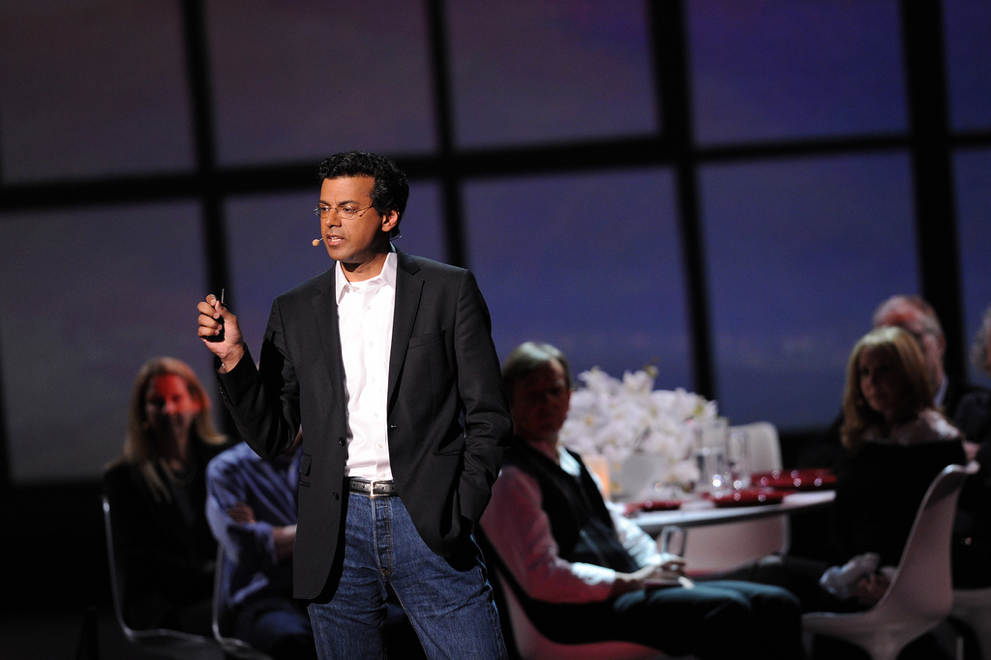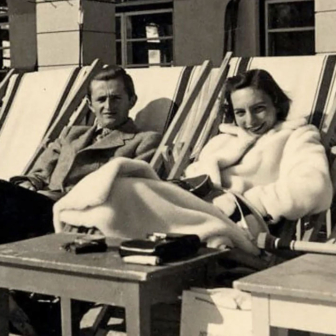Being Mortal: Medicine and What Matters in the End
By Atul Gawande | Profile Books | $27.99
In the epilogue to Being Mortal, Atul Gawande describes a predawn boat ride in Varanasi to scatter his recently deceased father’s ashes on the waters of the Ganges. When his holyman guide reaches over the side of the boat, scoops up a cup of river water and instructs him to sip three small spoonfuls of the rank fluid, he complies. Although he has premedicated himself with a dose of antibiotics tailored to the anticipated microbiological soup, he later comes down with a case of giardia. (Like most surgeons, who seem to believe that all antibiotics are essentially the same, he hasn’t included one to cover parasites.) In the final scene of what will undoubtedly be a highly influential book, the tension between the ancient and modern worlds, between ritual and science, and between religious belief and secular rationalism reach a touching resolution.
Atul Gawande, a Rhodes scholar with a master’s degree in philosophy, politics and economics from Oxford University, is a general surgeon at the Massachusetts General Hospital in Boston. He interrupted his medical studies at Harvard to work for Bill Clinton as a health adviser during the 1992 presidential campaign. His articles in the online magazine Slate, written with the rare perspective of a literate, practising surgeon interested in more than the quotidian details of his clinical practice, brought him to the attention of the New Yorker magazine, and he has been a staff writer there since 1998. His essays are lessons in gentle pedagogy and open-minded public health policy, and his previous three books have helped change surgical practice across the world. The second of them, Better, was in Amazon’s top ten books of 2007.
Being Mortal describes how modern medicine fails us when we need it the most – in our old age, and particularly during our last months, weeks and moments. It describes a system that so often strives to prolong life without considering what makes a life worth living. Gawande’s narrative skill, combined with his insider’s knowledge and access, produces a powerful handbook for action.
The first part of the book is a primer on the causes of ageing (“We just wear out,” is the final, if unsatisfactory, conclusion of one expert) and what it means to get old in the United States today. The second and, for me, better half is an exploration of how the medical profession, including Gawande himself, has failed to care wisely for those in their final illnesses.
It will be no surprise to learn that the population of the industrialised world is ageing. But the American healthcare system’s response will definitely come as a revelation. In 1790, only 2 per cent of US citizens were over sixty-five; today it is 14 per cent (and in parts of Europe it is 20 per cent). Yet the number of geriatricians in the United States fell by a quarter between 1996 and 2010. Only 300 doctors are in geriatric training programs – not enough even to replace those reaching retirement. While competition for training in radiology and plastic surgery, for example, is intense, less than one-in-thirty medical students take even a short course in geriatrics.
This should give pause to those who would increase fees in medical schools on the grounds that future earnings compensate for student debt, no matter how massive. If the economic theory that drives these deregulators holds true, it follows that specialties promising higher pay will be oversubscribed and the others will languish. Our current practice of remuneration, which over-rewards technical skills and use of medical technologies, will accentuate the sense of entitlement already displayed by debt-ridden graduates. I have repeatedly seen financial possibility trump altruistic intention in even the most idealistic young doctors.
Two generations of doctors have grown up in a population that began to curb its smoking in the late 1970s. This, in combination with the development of coronary artery stenting and therapies to control hypertension and blood lipids, has meant that one of the biggest causes of premature mortality, coronary artery disease, has been tamed. The death of men in middle age from a heart attack was once an unremarkable event, but it is now seen as unnatural and medically preventable.
These younger doctors face a demographic blip of postwar fecundity: the legion of ageing baby boomers, the oldest of whom are now in their late sixties. But although death has been postponed, and despite the predictable complaints about the sheer injustice of it,they will all eventually die. Cognitive and physical decline is inevitable (“We just wear out”) and the cost of supporting the millions who will need assisted accommodation and medical care is testing every modern economy. Contemporary medical services struggle to cope with current pressures; future demand will push them to breaking point.
Gawande describes the painful path of a number of his patients who have, he argues, suffered needlessly in their last months. He examines why we continue to offer patients invasive treatments when there is no hope of cure, and how increasing sub-specialisation makes it hard, if not impossible, for patients to get off the treatment conveyor belt once they step onto it.
Resistance to the idea of palliative care is common across the globe. For people who believe, for instance, that they must “battle” their cancer right up to the end, the word “palliative” equates to an admission of defeat. This refusal to give up is often abetted by members of the medical profession who display a poorly informed optimism about their patients’ prospects of survival. When 500 doctors were asked how long they thought their terminally ill patients would survive, 63 per cent overestimated the time (by over five times, on average) and the better they knew their patients the more likely they were to get it wrong.
Add to that the widely held belief that choosing a palliative care pathway will mean that you die sooner. In 2010, a landmark US study assigned 115 patients with advanced lung cancer to receive either normal oncology care or normal oncology care plus visits from a palliative care team. On average, those in the palliative care group stopped chemotherapy sooner, entered a hospice earlier and experienced less suffering. They also lived 25 per cent longer than those who received only standard oncology care. This is a stunning, counterintuitive finding. “If end-of-life discussions were an experimental drug,” says Gawande, “the FDA would approve it.”
To change the system we must first change ourselves. Helping people understand that they don’t have to pursue every option, no matter how expensive, uncomfortable or futile, requires considerable skill and training. In the late twentieth century, patient autonomy became the primary concern in medical ethics, and hence in doctors’ education; the paternalist doctor gave way to the informative doctor. This new medico would be a skilled technocrat, a holder of knowledge who gently, but dispassionately, outlines all treatment options so that patients can make their own informed choices. The doctor is the vendor of information, the patient the consumer.
This was how Gawande was trained. But despite the added autonomy, this new style of communication is fraught: the anxious, the less well-educated and those programmed by their culture to accept the words of authority without question may flounder in a one-way transaction. And so a third type of interaction has emerged, incorporating elements of the other two. This interpretive relationship is sometimes referred to as “shared decision-making.” The interpretive doctor asks questions as well as giving answers. What is most important to you? What are your worries? What are your goals for this treatment?
The value of shared decision-making is brought home to Gawande when his urologist father is diagnosed with a slow-growing but incurable tumour in the upper part of his spinal cord. The first neurosurgeon the family consults is considered to be the leader in his field, but his purely informational approach leaves the senior Gawande confused and the junior indignant. They travel interstate to see a surgeon who understands that the doctors on the other side of the desk – Gawande’s parents and himself – are now a patient and family. This doctor’s interactive consultation lets them make a careful plan of future treatment. For the son, managing his father’s rage against the dying of the light requires a careful balance of intervention and respectful distance. Gawande’s description of his father’s last weeks is told with a doctor’s precision but seen through a son’s tear-clouded eyes.
The palliative care philosophy is to live for the best possible day today instead of sacrificing time now for time later. Yet how often do we see (and permit) patients and friends lose their gamble of buying time for the future? Opting for heroic surgery with little or no chance of cure and then dying in intensive care, sedated so that you can tolerate the tubes down your throat, is one medical version of the Faustian bargain.
Although this is a book largely about end-of-life issues, Gawande touches on the euthanasia debate only briefly. He interprets the fact that in 2012 one-in-thirty-five Dutch people sought assisted suicide at their death as a measure of societal failure, not success. “Our ultimate goal,” he says, “is not a good death but a good life to the very end.”
As they age, most doctors learn that the satisfying part of their job has less to do with the technical mastery of their craft and more with the opportunity to help their patients in ways other than the merely physical. Gawande sums his beliefs up in this way: “I never expected that among the most meaningful experiences I’d have as a doctor – and, really, as a human being – would come from helping others deal with what medicine cannot do as well as what it can.” While teamwork is an essential feature of modern practice, a captain is needed to make hard decisions on the field to stop patients getting caught in the slipstream of a supersonic medical machine that sucks them along on a ride with no apparent driver or obvious final destination. Perhaps it comes down to a simple rule: one practitioner alone needs to take ultimate responsibility for the extraordinarily complex care that the seriously ill require.
The ideas contained in this book are not novel; indeed you could argue that there is a degree of naiveté in the author’s late awakening to the challenges of caring for the aged, his shock when he experiences close up the suffering of terminal illness, and his amazement that it could be so mismanaged. For more than a decade most health systems have recognised the need to address the arguments that he makes for better end-of-life care. But some of this “discovery” is literary device; sections of Gawande’s audience are influential and very powerful and I have no doubt he knows that this kind of popular exposition can be far more effective in delivering change than erudite policy documents ever can. In fact, I think this will be Gawande’s most important work. Making surgery safer across the world is not a bad early career achievement, but helping the medical world to recognise its limits and learn how to inject care, not just medicine, may just top it. •




